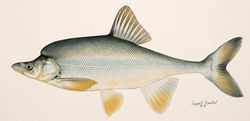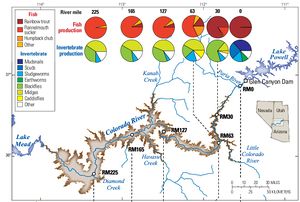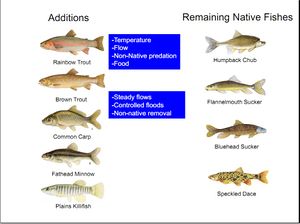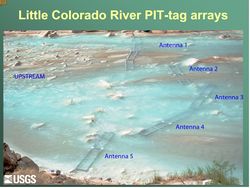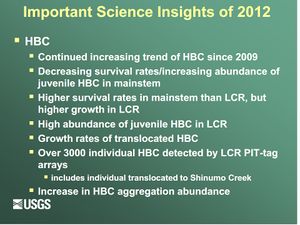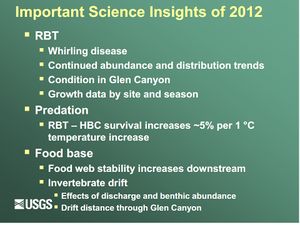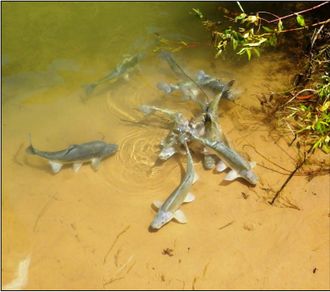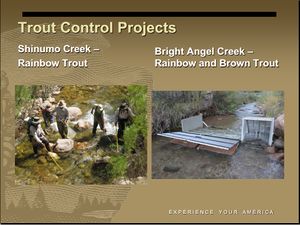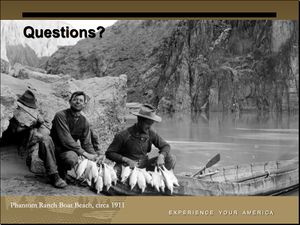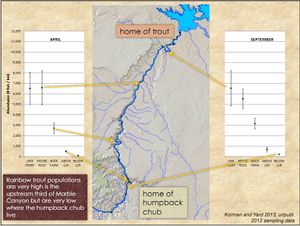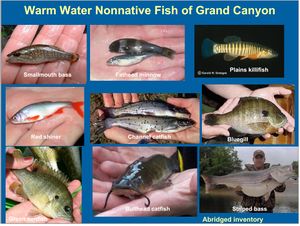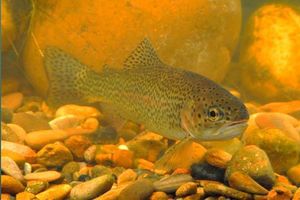GROUP MEMBERS
No Ad-Hoc Group currently assigned
|
|
|
News
|
|

Quick Facts
Work in progress
◦
Four types of fish that frequent the Colorado River and Lake Powell are officially endangered because of the construction of dams and introduction of non-native species: the razorback sucker, Colorado pikeminnow, humpback chub and bonytail.
Native
◦
In addition to the above, Lake Powell is naturally home to the bluehead sucker, flannelmouth sucker, roundtail chub and speckled dace.
◦
Non-Native Bass
◦
The National Park Service introduced three types of bass specifically for fishing purposes: the smallmouth bass, largemouth bass and striped bass.
Other Non-Natives For Fishing
◦
Other non-native species have been introduced into Lake Powell with the intent of challenging fisherman. These include walleye, rainbow trout, channel catfish, bluegill and black crappie.
Problematic Non-Native
◦
Though almost all non-natives are damaging to native ecosystems, the gizzard shad is causing many problems to the native and non-native fish populations because of its large size. The fish has spread throughout the lake and have no natural predators.
|
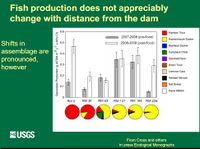
- NON-NATIVE FISH HISTORY Non-native fish species present in Grand Canyon were mostly established as a result of intentional stocking to develop sport fisheries in the Colorado River and its tributaries during the late 1800s and early 1900s. Impacts of these actions was not fully understood until later in the 20th Century when a shift to native species conservation management occurred in the NPS. Negative impacts of non-native fish and altered habitats on native fish species has been well-documented throughtout the world. Over 20 non-native fish species have been documented in GCNP; However, the more common, large-bodied, species of management concern include rainbow and brown trout, common carp, channel catfish, and bullhead species, striped and smallmouth bass. These species are known predators on native fish or native fish eggs or compete with native fish species.(NPS CFMP-EA_Pg 62) (17 warmwater species, 2 coldwater species, and 1 coolwater species)--- At least 7 additional species occur in nearby or adjoining waters with potential access to the Glen Canyon Ecosystem.
- The fish community throughout Marble Canyon, downstream of the Glen Canyon Reach is GCNP, is dominated by non-native rainbow trout. The fish community changes near the LCR inflow near RM 60 where native species begin to occur. (NPS CFMP-EA_Pg 63)
- POTENTIAL THREATS:
- Smallmouth Bass -- In early 2000, smallmouth bass increased dramatically in abundance in the Yampa River and Upper Colorado River. Just over a decade later, the species cannot be brought under control.
- "Prior to Glen Canyon Dam, the Colorado River was dominated by highly predacious non-native channel catfish. Catfish are warm water fish...Regular flooding of the LCR may be keeping catfish out of the LCR and cold water in the Colrado River does not provide habitat for catfish or other warm water fish. Without Glen Canyon Dam chubs may have been extirpated from Grand Canyon, catfish would still be the dominant fish in the Colorado River and the LCR." (090711_Minority Report to TWG_FFF_Mark Steffen)
- Should a disaster such as a landslide cut off the Little Colorado chub from the mainstem, the species could quickly become extinct -Article LINK
- Striped Bass is the largest predatory fish in Lakes Mead and Mohave.[Source: MSCP report August 2010]
|
INFORMATION
|
|
|
Reports and Links
|
|
|
Other Stuff
|
|
|
LINK: usbr/amp/amwg/mtgs/13feb20/Attach_07b|||||||
|
